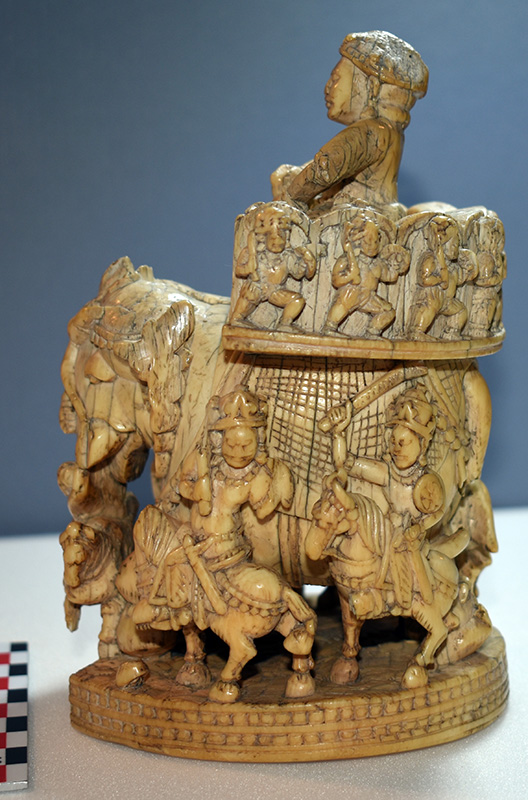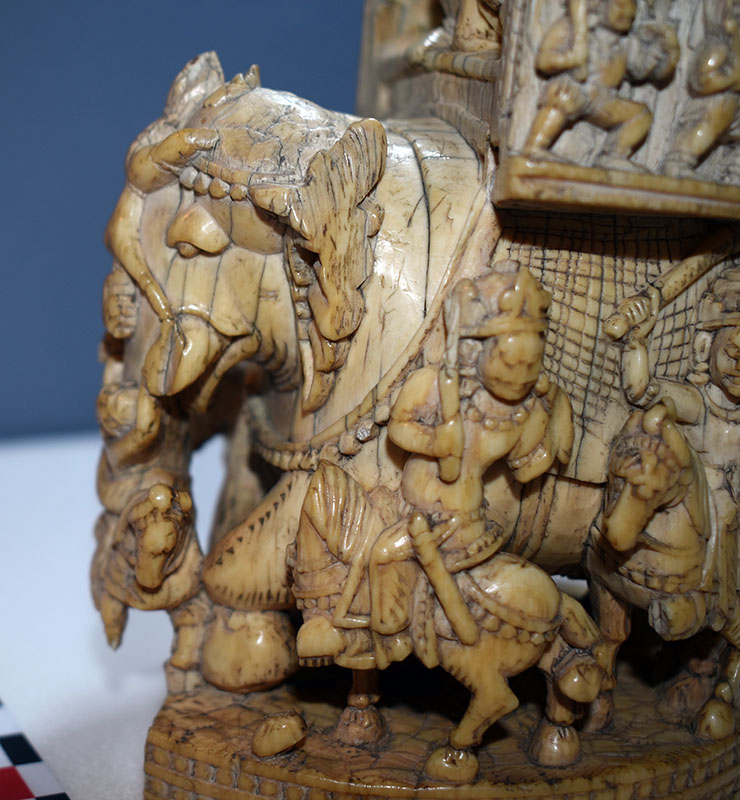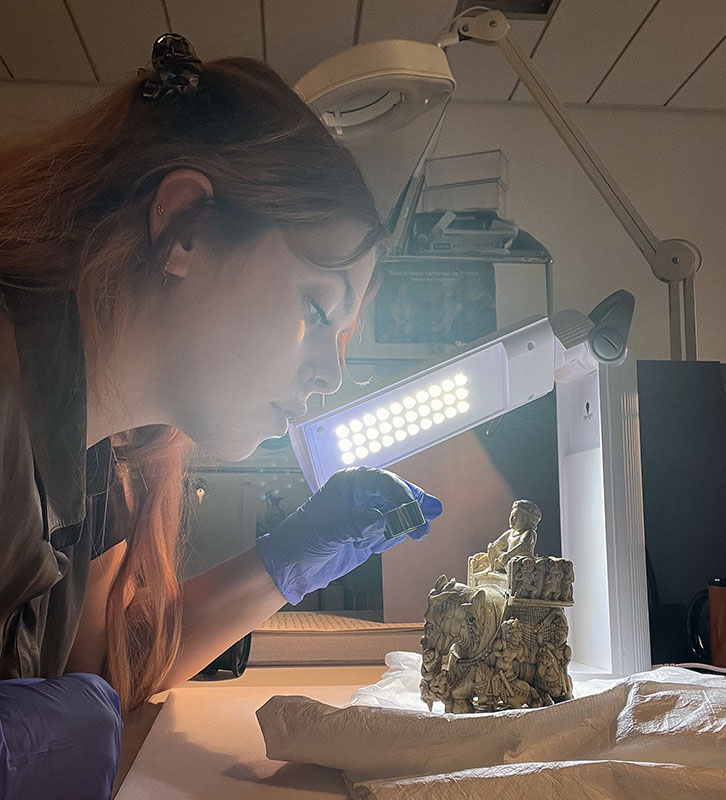The Chess Piece that Wasn’t: A Material Re-Assessment
by Ariana Pemberton
The game of chess reflects histories of transregional material exchange as much as it does the skills of statecraft and strategies of war. As the game was brought from South Asia to West Asia as early as the 6th century CE and into Europe by the 10th century, so too were its pieces, often carved in fine materials such as rock crystal, emerald, and ivory. With the generous support of a Decorative Arts Trust Research Grant, I was able to document and examine an ivory sculpture that has been traditionally identified as a chess piece with an intriguing, mythologized history at the Bibliothèque Nationale in Paris.
The so-called Elephant of Charlemagne was purportedly gifted from the Abbasid caliph Harun al-Rashid (766–809) to the Roman emperor Charlemagne (r. 774–814). However, as art historians such as Finbarr Barry Flood and Avinoam Shalem have engaged with this enigmatic ivory, it has been identified on stylistic grounds to instead belong to the late 9th or early 10th century, thus disproving the legendary history that it acquired. Scholars have also rightly challenged the identification of the large (15.5 x 8.9 cm) and elaborately carved sculpture as a chess piece in the first place! Indeed, most of what was thought to be known about the piece is now suspended in question. Nevertheless, the sculpture’s formal components may be interpreted as a representation of the elements of a chess set, that is, elements of a royal army: a decorated elephant (representing what we now know as the bishop) mounted by a king and surrounded by cavalry (knights) and dynamically posed foot soldiers (pawns). The now-disproven connection to Charlemagne notwithstanding, the object is still referred to as The Elephant of Charlemagne and is no less spectacular.
The object was most likely not used for chess rather as a sculpture representing a royal military procession. It was likely carved in northwest India (Sindh) around the 9th or 10th century and subsequently brought to Baghdad. By 1505, the object entered the collection of the Treasury of Saint Denis in France, and it likely acquired its fallacious lore in the following years. Moving beyond these questions that have concerned previous scholars, the fourth chapter of my doctoral dissertation parses out the material history of this object (and other comparable pieces carved in South Asia, West Asia, and Europe) through bio-analytical examinations of the ivory itself. As a paradigmatic and archetypal example, the Bibliothèque Nationale’s piece has provided me with crucial insight for future analyses and further research. During my visit, I was able to examine and document the fine and remarkably well-preserved detail of the carving as well as obtain a small sample of the ivory for Peptide Mass Fingerprinting (PMF), a bio-conservational method of testing used to determine a faunal material’s provenance to the species level. Using such methods to analyze the material of The Elephant of Charlemagne, I have been able to determine that the ivory used to carve the piece was sourced from an African elephant.
The global circulation of ivory, both raw and carved, is an important and guiding theme throughout my dissertation. Indeed, the centrality of the material’s trade during the Medieval period, I argue, transformed ivory into a global bio-commodity by the 16th century, setting into motion an ecological process that led to the endangerment of elephants. More broadly, my dissertation aims to offer new inter-disciplinary frameworks to study Medieval South Asian art by incorporating scientific research on the provenance of ivory alongside my own art historical analysis.
Ariana Pemberton is a PhD Candidate at the University of California, Berkeley.
About The Decorative Arts Trust Bulletin
Formerly known as the "blog,” the Bulletin features new research and scholarship, travelogues, book reviews, and museum and gallery exhibitions. The Bulletin complements The Magazine of the Decorative Arts Trust, our biannual members publication.
Click Images to Enlarge
Did you know that clicking on the images in Bulletin posts will allow you to get a closer look? Simply click on an image, and a larger version will open in a pop-up window.











